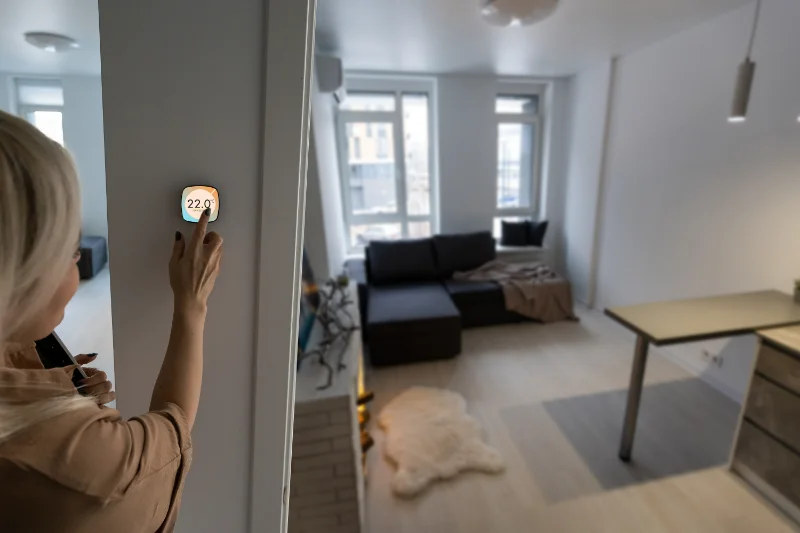Congratulations on your new home! As a new homeowner, you have the opportunity to not only make your space comfortable and inviting but also to make it energy-efficient. Energy efficiency not only reduces your carbon footprint but also saves you money on utility bills. Here’s a handy checklist of ways you can save energy in every room of your new house:

- Upgrade to LED Lighting: Replace incandescent bulbs with energy-efficient LED bulbs throughout your home. LEDs use significantly less energy and last longer, reducing the need for frequent replacements.
- Install a Programmable Thermostat: A programmable thermostat allows you to set temperature schedules to match your daily routine. Lower the temperature when you’re not home or during nighttime hours to reduce heating and cooling costs.
- Seal Gaps and Cracks: Check for gaps around windows, doors, and other openings. Use weather stripping and caulk to seal these gaps, preventing drafts that can make your heating or cooling system work harder.
- Upgrade Insulation: Insulation plays a critical role in maintaining a comfortable temperature inside your home. Ensure your attic and walls are adequately insulated to prevent heat loss in the winter and heat gain in the summer.
- Service Your HVAC System: Regularly maintain your heating and cooling system. Clean or replace filters, schedule annual inspections, and keep the system in optimal condition to maximize its efficiency.
- Use Energy-Efficient Appliances: When it’s time to replace appliances, opt for ENERGY STAR-rated models. These appliances consume less energy and perform just as well, if not better, than their standard counterparts.
- Unplug Electronics: Many electronic devices continue to draw power even when turned off. Use power strips to easily disconnect multiple devices at once when they’re not in use, reducing “phantom” energy consumption.
- Utilize Natural Light: Make the most of natural light during the day to reduce the need for artificial lighting. Consider installing light-colored curtains or blinds to let in more light while maintaining privacy.
- Upgrade Windows: If your budget allows, consider upgrading to energy-efficient windows. Double-glazed or low-E windows can help regulate indoor temperatures, reducing the workload on your HVAC system.
- Install Ceiling Fans: Ceiling fans can help distribute air more evenly, allowing you to set your thermostat a few degrees higher in the summer and lower in the winter.
By implementing these energy-saving measures in every room of your new home, you can create a more comfortable living environment while reducing your energy consumption. Not only will you enjoy lower utility bills, but you’ll also contribute to a greener, more sustainable future. Making these small changes now can have a significant impact in the long run, benefiting both your wallet and the planet.



